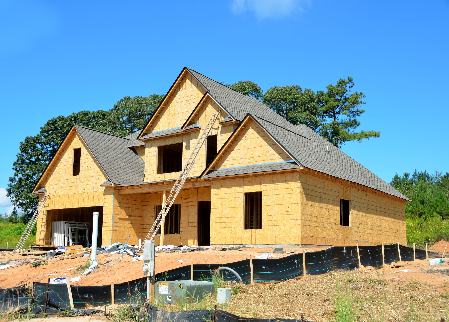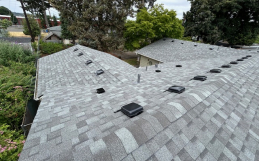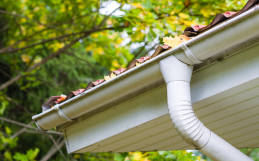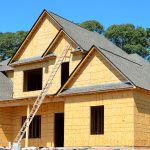Composite roofing has become popular in recent years as a durable and aesthetically pleasing alternative to traditional roofing materials. It blends the look of traditional materials like slate and cedar with the superior performance and practicality of advanced composites. But what is a composite roof?
Materials Used in Composite Roofing
Unlike conventional roofing materials, composite roofs are a blend of synthetic resins, reinforced polymers, and inorganic minerals.
Polymers: These form the backbone of the material, providing strength, flexibility, and weather resistance.
Stone: Crushed stone adds weight and texture, contributing to the realistic appearance and fire resistance of the product.
Pigments and dyes: These add the finishing touch, mimicking the colors and patterns of natural materials.
Additives: Depending on the manufacturer, specific additives might be used to enhance properties like fire resistance, algae resistance, and insect deterrents.
The manufacturing process typically involves blending the polymers, stone, and additives, followed by shaping and molding into the desired form. This allows for intricate designs and textures, replicating the look of natural materials with impressive authenticity.
Types of Composite Roofing
There are a variety of composite roofing options, with each offering unique characteristics and favorable qualities.
3-Tab Shingles
Characteristics and Features:
Appearance – 3-tab shingles were once known for their simple and classic design. They have a flat, uniform appearance with three distinct rectangular tabs of equal size. They are typically made of asphalt and have a granular surface for traction and weather resistance.
Installation – 3-tab shingles are relatively easy to install, making them a popular choice in the past. They are also lightweight and affordable, which made them a good option for budget-minded homeowners. However, because roofing materials have improved so much, 3-tab shingles are rarely used today.
Architectural Shingles
Homeowners looking for a roofing option that combines durability with aesthetic appeal often turn to architectural shingles for their textured and layered look.
Characteristics and Features:
Enhanced dimensionality – Architectural Shingles, also known as dimensional or laminate shingles, stand out for their enhanced dimensionality. They often mimic the appearance of natural materials like wood or slate.
Durable construction – These shingles are built with multiple layers, providing increased durability and resistance to harsh weather conditions.
Wide variety of colors and styles – Architectural shingles are available in a wide range of colors and styles, contributing to a more dynamic and visually interesting roof profile. You can find them in colors that mimic natural slate, tile, or cedar shake, as well as more traditional asphalt shingle colors.
Cost – Architectural shingles are typically more reasonably priced than other roofing materials such as metal. Increased durability, longevity, and performance make them a worthwhile investment in the long run.
 Performance:
Performance:
Durability – Architectural shingles are thicker and heavier than 3-tab shingles, making them more resistant to wind, hail, and other forms of damage.
Longevity – Architectural shingles typically have a longer lifespan than 3-tab shingles, lasting up to 30 years or more.
Improved weather resistance – The thicker profile and additional layers of asphalt in architectural shingles help to provide better protection against water infiltration and ice dams.
Fire resistance – Many architectural shingles have a Class A fire rating, the highest rating available for roofing materials.
Other features:
Algae resistance: Some architectural shingles are treated with an algae-resistant coating that helps to prevent the growth of moss and mildew on your roof.
Cool roof technology: Some architectural shingles are designed with cool roof technology, which can help to reflect heat from the sun and lower your cooling costs.
Luxury Shingles
Luxury shingles are the crème de la crème of roofing materials, designed to elevate the look and performance of your home. They stand out from the crowd with their premium features and characteristics, making them a worthwhile investment for discerning homeowners.
Characteristics and Features:
A distinctive high-end look – Luxury shingles often mimic the look of natural materials like slate or wood shake, with intricate textures, varied colors, and dimensional profiles. This adds depth and character to your roof, making it a true focal point.
Unique color palettes – You don’t have to stick with the standard black or gray. Luxury shingles come in a wide range of rich, nuanced colors, and even blends, allowing you to create a truly tailored look for your home.
Shadow lines – The random placement of tabs in some luxury shingles creates beautiful shadow lines that change throughout the day, adding visual interest and dimension to your roof.
Advanced technology – These shingles often incorporate advanced manufacturing techniques and materials, resulting in superior performance.
Performance:
Built to last – Luxury shingles are crafted from high-quality materials like fiberglass and composite polymers, making them significantly heavier and thicker than standard asphalt shingles. This translates to a lifespan that can reach 50 years, compared to the 15-20 years of traditional shingles.
Weather resistance – They can withstand harsh weather conditions like strong winds (up to 130 mph in some cases), heavy snow, and hailstorms with ease, thanks to their robust construction.
Fireproof – Most luxury shingles boast a Class A fire rating, the highest in the industry, offering superior protection against fire hazards.
Algae defense – Special coatings prevent the growth of algae and moss, keeping your roof looking pristine and reducing the need for frequent maintenance.
Other features:
Energy efficiency – Some luxury shingles come with reflective properties that can help keep your home cooler in the summer, potentially reducing your energy bills.
Noise reduction – Their thicker construction can provide better soundproofing, making your home quieter during rain or hail.
Increased curb appeal – A well-chosen luxury shingle roof can significantly boost the resale value of your home.
With all these advantages, it’s easy to understand why composite shingles are quickly becoming the preferred roofing material for homeowners. The roof of your house is like the top of your head – without the right coverage, it takes the brunt of rainstorms, hail, hot sunny days, and cold winter winds. Talk with our team at Warner Roofing about how composite roofing can protect and beautify your home. We’ll find the style to match your home’s architectural design and your budget.
Frequently Asked Questions
Is composite roofing environmentally friendly?
Many composite roofing materials incorporate recycled content, making them a more environmentally friendly option compared to some traditional roofing materials. The longevity of certain composite roofing also contributes to reduced waste over time.
How does the cost of composite roofing compare to other roofing materials?
The cost of composite roofing varies depending on the specific type chosen. While some composite roofing options may have a higher upfront cost than traditional materials like asphalt, they often offer long-term savings due to their durability and energy-efficient properties.
How long does composite roofing last?
The lifespan of composite roofing varies based on the specific type and quality of the material. Generally, well-maintained composite roofing can last anywhere from 20 to 50 years, depending on factors such as climate and installation.
Can composite roofing be installed on any type of roof?
Composite roofing is versatile and can be installed on a variety of roof types, including steep-sloped roofs commonly found in residential buildings. However, it’s essential to consult with roofing professionals to ensure proper installation based on the specific requirements of your roof.
Are there any special maintenance requirements for composite roofing?
Composite roofing typically requires minimal maintenance. Regular inspections, clearing debris, and addressing any visible damage promptly can help prolong the lifespan of the roof. It’s essential to follow the manufacturer’s guidelines and consult with roofing professionals for specific maintenance recommendations.







